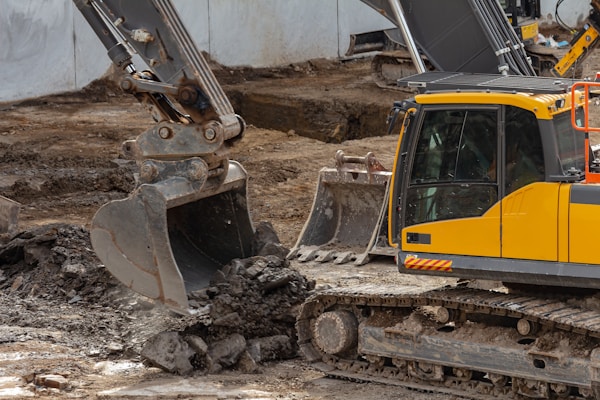Construction workers use excavation to remove soil, rock or other material in order to reach the desired depth for their project. Excavation is also used to create level areas for foundations, roads, or other structures. Keep reading to learn more about why it’s useful in construction work.
How is excavation performed?

Excavation is the process of removing earth, sand, gravel, or other material from an area. This can be done manually with shovels and buckets, or with machines such as bulldozers and excavators. It is often used in construction work to create a foundation for a building or to remove soil that is contaminated by pollutants. The first step is to mark out the area that needs to be dug. This can be done using stakes and ropes, or by drawing a plan on the ground. Next, the soil is loosened using shovels, picks, hoes, or other tools. The loosened soil is then removed from the site either by hand or with machinery. In some cases, it may be necessary to use explosives to break up large rocks or boulders. Once the process is complete, the site must be filled in again. This can be done with loose dirt, gravel, or crushed stone. The fill material must be compacted so that it will not settle over time.
Are there any special tools or equipment required for excavation work?
There are several special tools that are required for construction work. Shovels, picks, and hoes are all used to remove earth by hand. Jackhammers and drills are used to break up rock and concrete. Tractors and bulldozers are used to move earth with machinery. It is important to choose the right tools and equipment for the job, as they can make the work a lot easier and faster.
What are some of the hazards associated with excavation work?

Excavation can be dangerous if workers are not careful. The sides of the hole can collapse, injuring or killing workers. The soil can also contain hazards such as buried power lines, gas pipelines, and toxic waste. Thankfully, there are some measures that workers can take to avoid injuries.
How can the risks associated with excavation be minimized?
The risks associated with this process can be minimized by taking steps to protect workers and by using safe techniques. One way to protect workers is to use shielding devices, such as trench boxes, shoring walls, and sandbags. Trench boxes are metal boxes that are installed in trenches to prevent the sides from caving in. Shoring walls are temporary walls that are erected next to trenches to support the dirt on both sides. Sandbags are filled with sand and placed around a site to prevent soil from slipping away. Another way to minimize risks is by using proper safety equipment. Workers should wear hard hats, safety goggles, and other personal protective equipment (PPE) when working near a site. They should also be aware of the hazards associated, such as falling debris and hazardous gases.
Drain excavation is another common process. It involves creating a ditch or trench that will serve as a drainage system for rainwater or melted snow. This ditch can be installed near a building or structure, or it can be installed underground. It is important to have an effective drainage system in place in order to prevent water damage and erosion.
Overall, excavation is an important process in construction work as it helps to create a foundation for the structure and remove any obstructions in the way. Additionally, it can be used to help level the ground and prepare it for the installation of certain materials.









